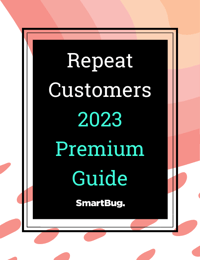
Have you ever walked into a retail store and been greeted by an employee who knows exactly what you’re looking for based on previously bought items, items you’ve been eyeing, and items that might also suit your taste? This is what is commonly referred to as an “exclusive shopping experience” in a brick-and-mortar store.
In e-commerce, every frequent customer has access to this exclusive experience. The process of understanding the customer based on their interests, demographics, and behaviors is known as personalization. Personalization makes a customer feel seen by the business and improves their shopping experience. For you, personalization can lead to more loyal customers and higher conversion rates.
Here are 20 personalization strategies for e-commerce brands:
1. Use customer data to create personalized recommendations.
Use customer data such as purchase history, browsing history, and demographic information to create personalized product recommendations for individual customers. For example, if a customer has purchased outdoor gear in the past, you might recommend other outdoor gear products to them.
2. Personalize email marketing campaigns.
Use customer data to personalize the content and subject lines of your email marketing campaigns. For example, you might use a customer's name in the subject line or send them emails with products that are relevant to their interests.
3. Create personalized landing pages.
Use customer data to create personalized landing pages that are tailored to the specific interests and needs of individual customers. For example, you might create a landing page with products that are relevant to a customer's purchase history or browsing history.
4. Offer personalized loyalty rewards.
Use customer data to create personalized loyalty rewards for your customers. For example, you might offer customized discounts or free shipping based on a customer's purchase history or browsing history.
5. Use personalized retargeting ads.
Use retargeting ads to show customers ads for products that are relevant to their interests or purchase history. This can help to encourage repeat purchases and build loyalty with customers.
6. Use personalized email templates.
Use personalized email templates to tailor your emails to the specific needs and interests of individual customers. For example, you might use a customer's name in the subject line or send them emails with products that are relevant to their interests.
7. Use personalized abandoned cart emails.
Use abandoned cart emails to remind customers of items they have left in their shopping cart and encourage them to complete their purchase. You can personalize these emails by including the specific items that the customer has left in their cart and offering personalized recommendations or incentives to encourage them to complete their purchase.
8. Use personalized push notifications.
Use push notifications to send personalized messages to customers, such as alerts about new products or sales that are relevant to their interests.
9. Use personalized product packaging.
Use personalized product packaging to create a more personalized customer experience. For example, you might include a personalized note or include personalized packaging materials such as custom-printed tissue paper or ribbon.
10. Use personalized thank you emails.
Use personalized thank you emails to show your appreciation to customers for their business and encourage them to make repeat purchases. You can personalize these emails by including the specific products that the customer has purchased and offering personalized recommendations or incentives to encourage them to shop with your business again.
11. Use personalized website content.
Use customer data to personalize the content of your website for individual customers. For example, you might show personalized product recommendations or display content that is relevant to a customer's interests or purchase history.
12. Use personalized chatbot conversations.
Use chatbots to provide personalized support to customers. For example, you might use chatbots to provide personalized recommendations or answer frequently asked questions based on a customer's previous interactions with your business.
13. Use personalized retargeting ads on social media.
Use retargeting ads on social media to show customers ads for products that are relevant to their interests or purchase history. This can help to encourage repeat purchases and build loyalty with customers.
14. Use personalized loyalty programs.
Use customer data to create personalized loyalty programs that are tailored to the specific needs and interests of individual customers. For example, you might offer customized discounts or rewards based on a customer's purchase history or browsing history.
15. Use personalized upselling and cross-selling techniques.
Use customer data to create personalized upselling and cross-selling techniques that are tailored to the specific needs and interests of individual customers. For example, you might suggest related or complementary products to customers based on their purchase history or browsing history.
16. Use personalized product descriptions.
Use customer data to create personalized product descriptions that are tailored to the specific needs and interests of individual customers. For example, you might include personalized recommendations or highlight features that are relevant to a customer's interests or purchase history.
17. Use personalized search results.
Use customer data to personalize the search results that are displayed to customers. For example, you might prioritize products that are relevant to a customer's interests or purchase history in the search results.
18. Use personalized email newsletters.
Use customer data to create personalized email newsletters that are tailored to the specific interests and needs of individual customers. For example, you might include personalized recommendations or highlight products that are relevant to a customer's interests or purchase history.
19. Use personalized sales and promotions.
Use customer data to create personalized sales and promotions that are tailored to customers’ specific interests and needs. For example, you might offer customized discounts or promotions based on a customer's purchase history or browsing history.
20. Use personalized customer service.
Use customer data to provide personalized customer service to individual customers. For example, you might use a customer's purchase history or browsing history to suggest relevant products or answer their questions more effectively.
Personalize with SmartBug Media!
As you can see, personalization isn’t just about the right messaging; it’s about collecting data and putting that information to good use in order to create excellent content that delights customers and encourages them to convert.
By working with our team of strategists and creatives, you’ll receive email and SMS marketing services that are based on understanding your audience to a T.
To learn tips and tricks for retaining customers, check out our e-book, Repeat Customers: How to Get E-Commerce Customers to Swipe Right on Your Business.

About the author
Ryan O’Connor was formerly SmartBug’s Director of E-commerce Growth, product manager, and sales director. He enjoys helping readers learn how to solve big business challenges through consumer psychology within the constantly evolving e-commerce landscape. Over the past 10 years, Ryan has helped 1000s of DTC brands navigate challenges to grow fast through intelligent marketing. He’s not afraid to get his hands dirty, having launched his own e-commerce stores from the ground up. Read more articles by Ryan O’Connor.









